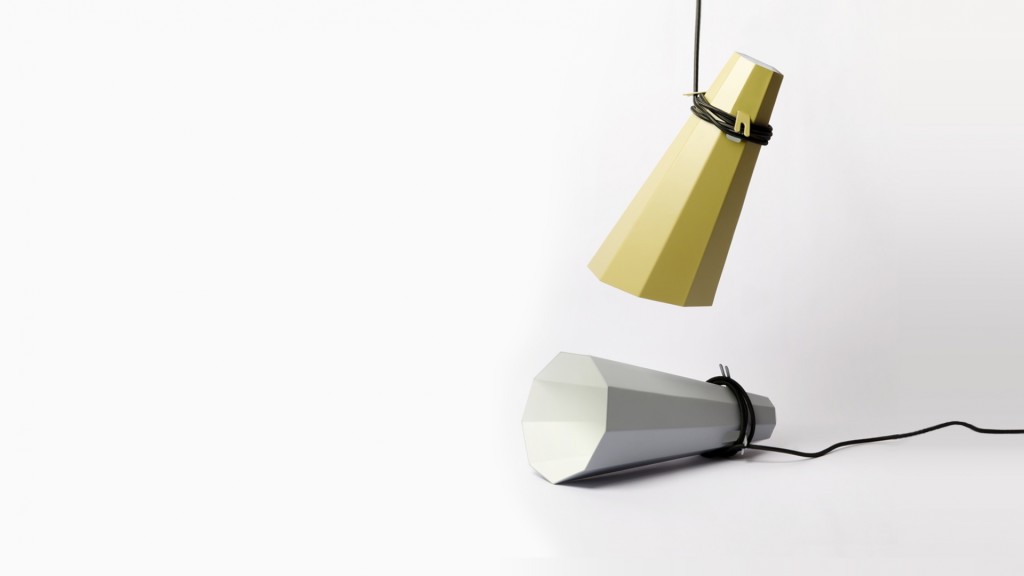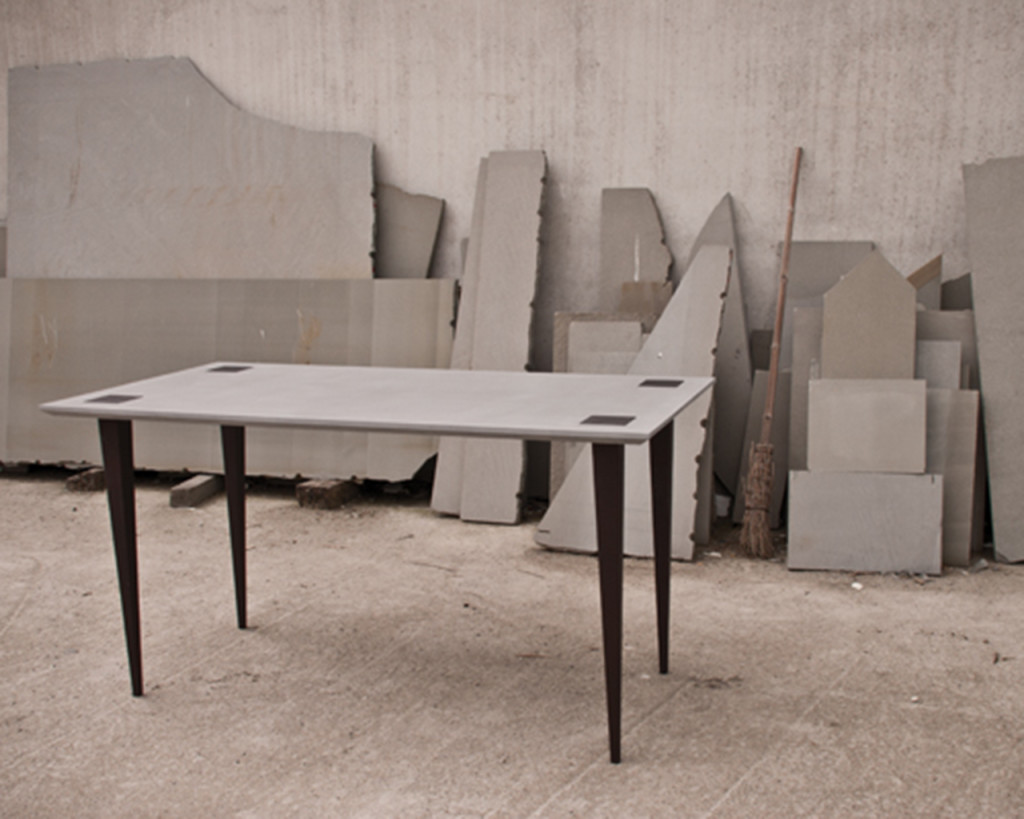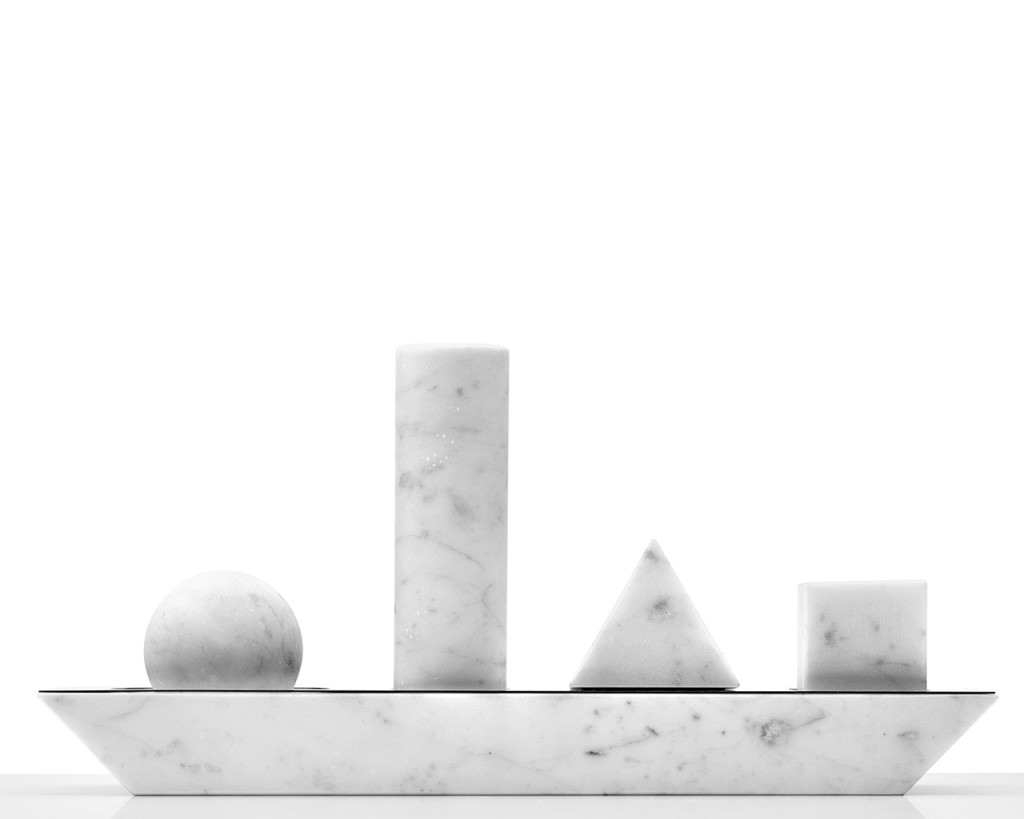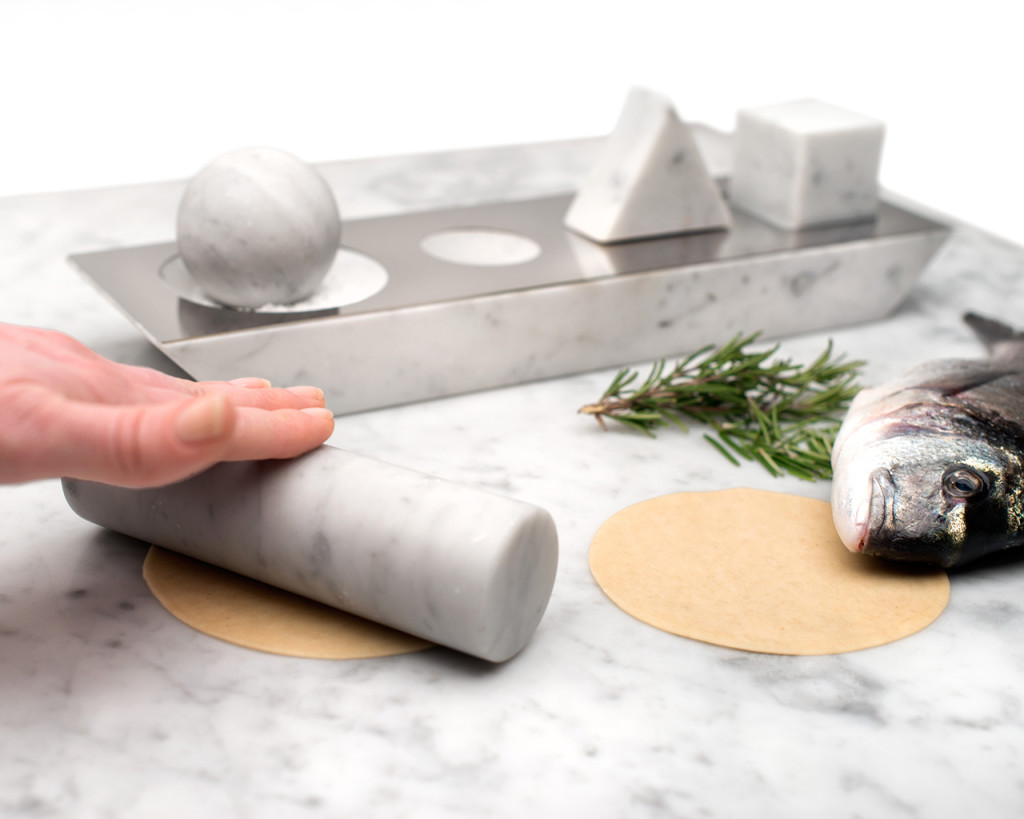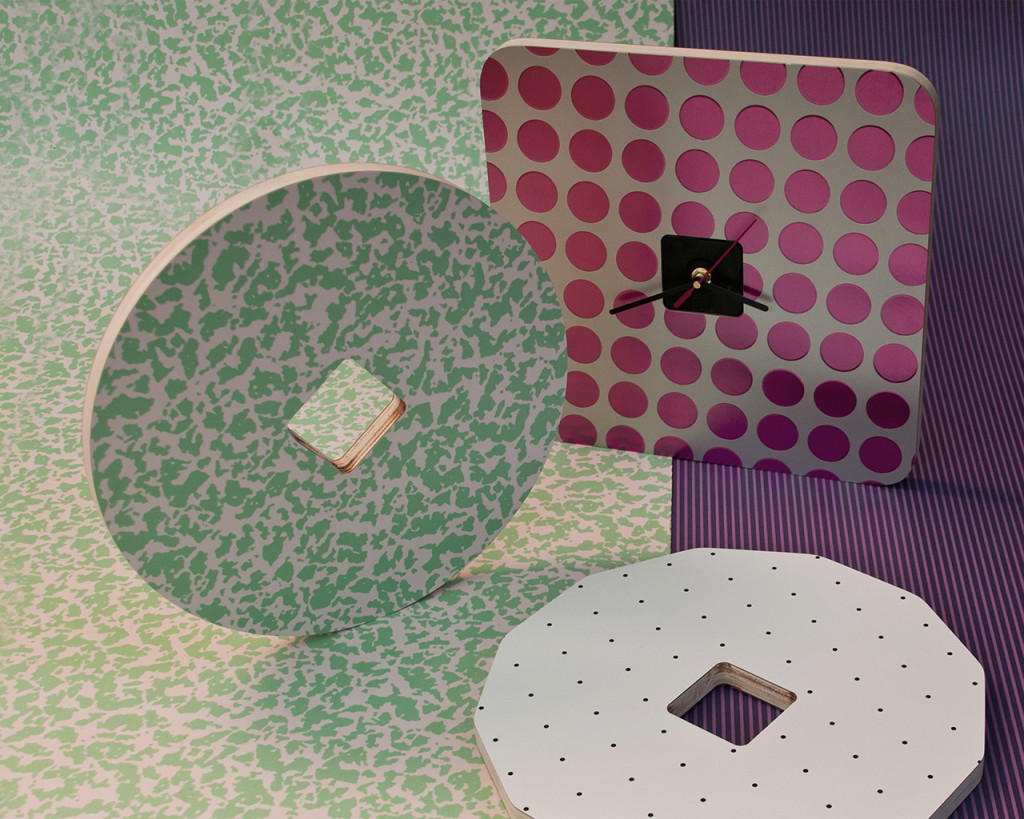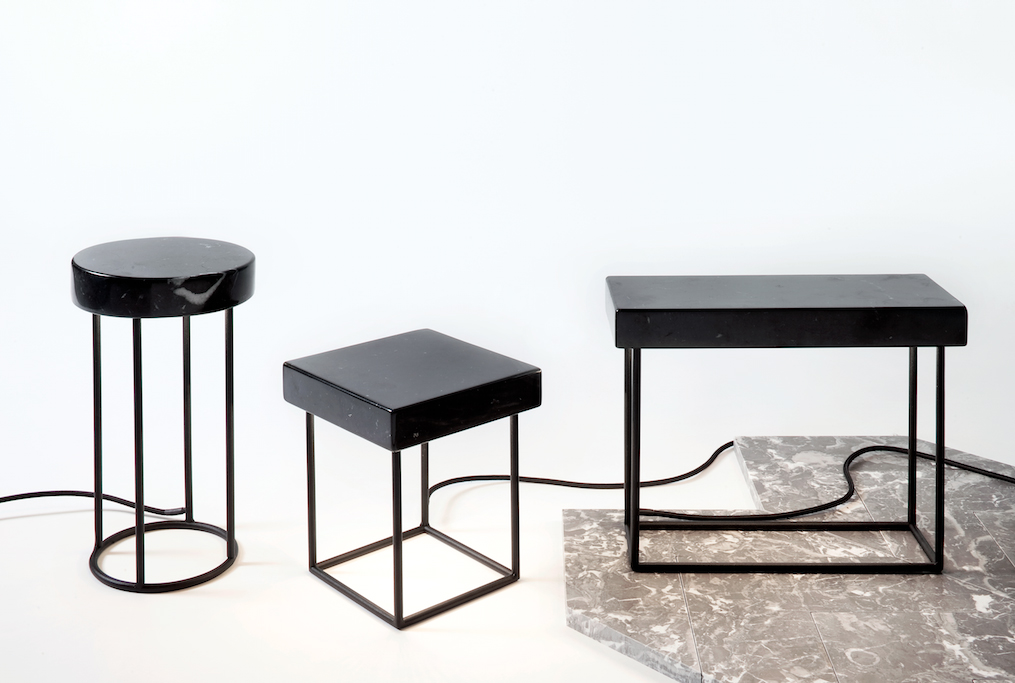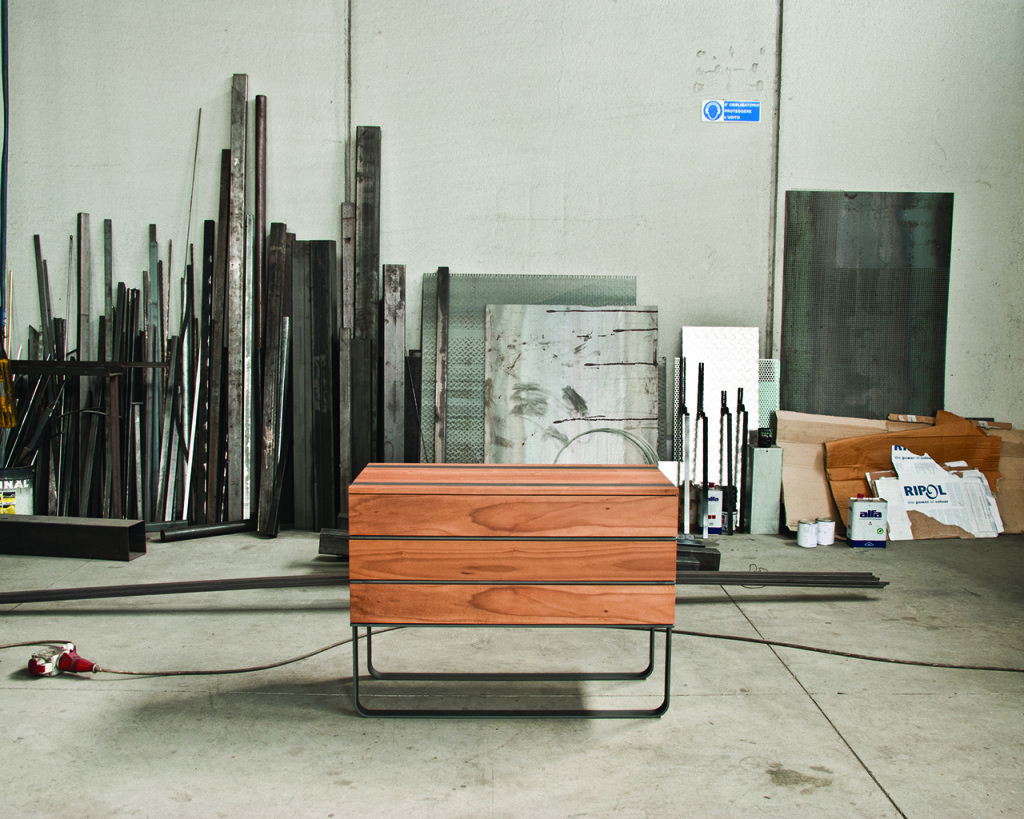Studio Lievito è frutto di un’accurata ricerca di passioni affini, una prima di tutte: la voglia di lavorare insieme. Siamo tre distinte personalità legate però da tratti comuni: la passione per la sfida, la ricerca del nuovo, il rispetto per la materia e la qualità come elemento di ogni progetto”.
Come il lievito, lo Studio ha una sua anima, i suoi tre creatori: Jacopo Volpi, Francesco Taviani e Laura Passalacqua.
Jacopo ha un accento ligure anche se ligure non è, viene da Carrara, ama cucinare, la buona musica e andare su una bicicletta costruita con le sue mani. Francesco é l’anima nostalgica ma dallo spirito imprenditoriale del gruppo, ama collezionare antichi giochi in scatola, ed infine Laura, nata a Fiesole, instancabile divoratrice di mostre d’arte, odia il sughero e il mare. Questi sono I tre Toscani che in tempo di crisi decidono di scommettere sulla loro terra ancora piena di risorse e di abili artigiani.
I ragazzi si formano tra Firenze e Milano nella stessa Università ed entrano in contatto tra loro conoscendosi progettualmente durante numerosi ed animati workshops. Dopo aver terminato gli Studi Accademici ed essersi arricchiti con alcuni anni di esperienze lavorative, decidono di aprire il loro Studio. “Può sembrare strano aprire un’attività simile in una città d’impronta rinascimentale come il capoluogo fiorentino: non sarà come lavorare a Milano circondata dale sue numerose fabbriche o come vivere nella capitale della creatività parigina; ma la nostra città ci sta dando un grande supporto, ed in particolare con gli artigiani e le aziende locali si è istaurato un ottimo rapporto come un direttore d’orchestra fa con i suoi musicisti”.
Perché il Lievito, cosa rappresenta per voi questo ingrediente nella vita e nel lavoro?
Quando sono entrata nel loro mondo ne sono rimasta affascinata: la loro personalità e le loro idee emergono in ogni lavoro. Pensando al loro nome mi è subito venuto in mente l’impasto del pane, del quotidiano, del genuino e non ho potuto far a meno di chiedere a cosa fosse dovuta la scelta del loro nome.
“Il Lievito rappresenta e descrive molto di noi. [“fig. Quanto serve ad alimentare il diffondersi di uno stato d’animo o di un’idea” ]” mi spiegano, “Quella reazione inarrestabile che questa sostanza innesca tra ingredienti apparentemente inerti é ciò che per noi significa progettare. Creare infiniti links, rimandi tra forme e materiali fino a fondersi in un’amalgama perfetta. Nell’arte culinaria non basta seguire gli appunti di una ricetta: gli ingredienti ci mettono sempre del proprio. Perché uno più uno non restituisca due, ma almeno tre”.
Così come l’anima del lievito si tramanda da impasto ad impasto, così l’idea del rapporto dello Studio con il passato è ben radicata, ma sa guardare avanti: molti dei loro progetti si isirano alla materia artigiana e a suo recupero, tuttavia questi stessi progetti non esisterebbero se non fossero sostenuti da una produzione industriale. Ed è a questo punto che passato e presente si incontrano, attraverso le idee, attraverso una volontà autentica che sta alla base di tutto il processo creativo e realizzativo. Ultimo passo della loro produzione è infatti quello di rifinire a mano le loro opere, “Assemblare in serie pezzi unici per rispondere all’urgenza di un design slow, ma al passo con le logiche del mercato contemporaneo”: attraverso questa attenzione e questa volontà Studio Lievito si pone come “cerniera tra passato e futuro”.
A questa spiegazione, osservando la qualità e l’originalità dei prodotti dello Studio, chiedo in che modo avviene il loro processo creativo e come rispettano la loro volontà di voler rendere unica ognuna delle loro realizzazioni attraverso questo meccanismo realizzativo. Quale ingrediente, qual è il loro valore aggiunto?
“Ci piace molto valorizzare la qualità, l’originalità, l’interpretazione. Lavoriamo componendo principalmente forme primarie dove l’intervento ‘stilistico’ é ridotto al minimo, nel rispetto dell’identità dell’archetipo che trattiamo di volta in volta. Ciò che da un’identità particolare ai nosri progetti é la matieria: dalla pietra serena al marmo, dalla porcellana al vetro, dal legno al ferro, impieghiamo tutti materiali del nostro territorio.
La cucina ci influenza a tal punto da indurci a confrontarci spesso con il disegno di questo ambiente quotidiano. La preparazione e la consumazione del cibo sono pratiche primordiali, e costituiscono un interessante condensato dei caratteri propri di ogni cultura. Progettare strumenti atti a svolgere questi processi significa instaurare un contatto ‘intimo’ con l’utilizzatore. I nostri progetti cercano di costruire un alfabeto privato fatto di forme e materie, che chiede un’attiva partecipazione dell’utente per essere compreso: la sua curiosità prima di tutto. Oggetti che spiegano sé stessi soltanto se utilizzati, anche impropriamente!”.
Sono proprio questi oggetti a d essere stati protagonisti di interessanti esperienze, una tra queste è stata quella dell’autoproduzione. Il primo progetto realizzato attraverso questa modalità, grazie a una piattaforma di crowfunding italiana, è Type: un dosaspaghetti in marmo la cui forma rimanda a un carattere di stampa. L’elemento affascinante di questo oggetto di design è triplice: viene utilizzato nel quotidiano nonostante la forma semplice e nobile, serve per dosare un alimento che rappresenta la nostra cultura e tradizione ed è realizzato con il materiale simbolo della terra di Studio Lievito. La linearità e la semplicità di un pensiero traspaiono dall’opera che si realizza e questa parla del suo autore, delle sue intenzioni e delle sue accortezze: la risposta inaspettata ed intelligente è proprio in quel che ci circonda, in ciò che crediamo sia familiare ma che riesce incredibilmente a sorprenderci.
“Type trasforma un’azione quotidiana in qualcosa di più, omaggiando una delle varietà più caratteristiche della pasta italiana.” mi spiegano I ragazzi dello Studio “ Lavorando spesso con gli oggetti per la cucina, il dosaspaghetti è stata una tappa obbligata per noi. Avevamo in mente di creare uno strumento semplice, utile ed allo stesso tempo iconico. Ci piace molto l’idea di “dosare” le materie prime in qualsiasi campo si lavori, analizzando i passaggi di ogni operazione allo scopo di individuare i nodi superflui e gli eccessivi scarti: dalla cucina all’industria, dall’agricoltura alla politica. Il “saper dosare” le risorse risulta un’azione preziosa a nostro avviso in particolare nel periodo economico che stiamo attraversando. La scelta del marmo è stata naturale, questo materiale descrive l’area dove viviamo e dove vogliamo lavorare ed esprime pienamente l’identità di Studio Lievito, che si costruisce a cavallo tra passato e futuro”.
Un altro progetto di semplicità ed intelligenza , caratteristiche ormai identificative dello Studio, è Ennagona, una lampada a sospensione realizzata per Officinanove.
“Questo progetto è stato inizialmente prototipato nel 2013 per essere esposta durante la Design Week Milano all’interno dello spazio Designjunction La Pelota, dove Officinanove ha avuto modo di apprezzare il progetto individuando in esso affinità con il proprio mood. Questo interesse si è poi concretizzato in un reale prodotto costituendo uno degli elementi della collezione che segna il rilancio di Officinanove sotto la guida della genovese Onfactory.
La lampada, nasce dall’idea di piegare un foglio di carta, è stata realizzata in due misure ed è disponibile in un ampio range di colori. Si può regolare l’altezza del filo a piacimento senza doverlo tagliare, semplicemente avvolgendolo intorno alla forma in lamiera d’alluminio”.
Che cos’é il design per Studio Lievito?
“Progettare per noi significa coltivare una ‘piccola ecologia esistenziale’. Cercare di annullare ogni sorta di gerarchia tra gli elementi; il design non crea vinti né vincitori e non apre conflitti d’interesse. Gli elementi in gioco finiscono piuttosto con pacificarsi a vicenda in un mutuo riconoscimento.
Il design é il primo responsabile del buon esito delle nostre attività quotidiane: la complessità della progettazione di un oggetto o strumento deve risolversi per l’utilizzatore in una percepita immediatezza d’utilizzo, pena la mancata performance dell’oggetto! ”.
Dopo questa spiegazione chiedo quali nuovi progetti ci sono in cantiere,domandando quale sarà il prossimo oggetto di design che mi garantirà il bon esito delle mie azioni quotidiane.“Durante l’utima edizione di Operae, festival dedicato all’autoproduzione, tenutosi a Torino qualche settimana fa, abbiamo presentanto il brand OttAnta che nasce dalla collaborazione tra il nostro studio ed un’azienda produttrice di arredi in legno. I nostri trent’anni di vita si sono confrontati con altrettanti trent’anni di esperienza aziendale di Design80 con l’intento comune di costruire un’autoproduzione che non rinunci al fondamentale apporto tecnico del produttore, attivamente coinvolto nello sviluppo del progetto.
Il prodotto che tiene a battesimo il brand OttAnta è Fugit, un orologio da parete. Lancette sospese all’interno di un pannello rivestito da scampoli di laminati provenienti dalle lavorazioni della fabbrica ogni volta differenti. Tre forme primarie ed innumerevoli combinazioni grafiche sono gli ingredienti del progetto, una collezione di textures che ci porta avanti ed indietro nel tempo, con suggestioni estetiche che vanno dai polite anni Cinquanta al design sperimentale dei Settanta, fino alle note sempre sopra le righe degli Ottanta”.
Uno studio giovane che collabora con un’azienda con una grande esperienza sono un segnale forte e positivo da mostrare in Italia in questo determinato periodo storico in cui le difficoltà che si trova ad affrontare uno studio come Lievito si trova ad affrontare è la medesima incontrata da aziende e produttori. Nonostante I tempi, Lievito vede in questa crisi nuovi stimoli e grande motivo di ricerca di nuove opportunità: “E’ necessario teorizzare e costruire differenti modalità di produzione in cui il designer ricopre ruoli differenti e si inserisce nel processo produttivo a più livelli. In questo panorama ci troviamo a mettere in discussione continuamente il nostro lavoro, che viene ‘disegnato su misura’ di volta.Nei nostri progetti ci affidiamo agli artigiani perché sono il vero futuro del nostro paese. Pensiamo che non possa esistere una industria competitiva e organizzata se dietro le quinte non ci sono saperi artigiani in grado di plasmare la materia. Siamo infatti da sempre affascinati dall’attraversare il confine rigido ed allo stesso tempo labile tra artigianato e produzione industriale, condensando i pregi di entrambe nei propri progetti”.
Dopo questa risposta sono stata pervasa da una grande carica positiva, perché vedo in Studio Lievito quello che The WalkMan cerca costantemente: il talento, le idee di giovani creativi che hanno un loro modo di vedere le cose e che sanno credere nei loro sogni e nei veri valori, artisti veri che riconoscono l’arte e la loro importanza e non sanno fermarsi davanti le difficoltà che stiamo attraversando, ma che anzi fanno della loro scommessa una regola, una filosofia. Tutte queste intenzioni traspaiono vividamente da ogni progetto, ogni oggetto è creatura di menti che sanno amare quel che fanno e trovo che questo sia affascinante.
In chiusura della nostra intervista, non posso esimermi quindi dal chiedere a Studio Lievito cosa suggerire a ragazzi che come loro hanno deciso di investire la propria vita nella creatività: “Sicuramente é necessario investire nella creatività, nel design come nell’arte, al fine di ricostruire l’identità culturale del nostro paese. L’arte é la massima espressione delle capacità cognitive umane, é sarà la chiave per uscire dal periodo storico difficile che stiamo attraversando”.
[divider]ENGLISH VERSION[/divider]
“Studio Lievito is the result of an accurate research of common passions. At the first place: the will to work together. We are three different characters bound by common features: passion for challenges, search for what is new, respect to the material and quality as element of every single project.” Just like yeast – which means lievito – the Studio has his own soul, his three creators: Jacopo Volpi, Francesco Taviani e Laura Passalacqua. Jacopo’s accent sounds Ligurian but he is not from Liguria, he comes from Carrara, he loves cooking, listening to good music and using his homemade bicycle. Francesco is the nostalgic but entrepreneurial spirit of the group, he loves collecting old board games, and finally there is Laura, she is from Fiesole, with a tireless and avid love for art exhibitions, she hates cork and the sea. These people are the three Tuscans that, during these times of crisis decided to bet on their own country, which is still full of resources and expert artisans.
The guys got their education between Florence and Milan and went to the same University, then they came to know each other meeting during numerous and animated workshops. After finishing the Academic Studies and saving some money thanks to some years of working experiences, they decided to open their own Studio.
“ It could seem strange to start such a business in a renaissance city as the Florentine chief town: it will not be like working in Milan, surrounded by his numerous factories, or living in the capital of the Parisian creativity; but our city is giving us a big support, we established a great relationship especially with artisans and local companies, just like the one between a director and his orchestra.”
Why Lievito, what does this ingredient mean for you in your life and work? When I entered their world I got fascinated by it: their personality and their ideas emerge from every work. Thinking about their name it suddenly came to my mind bread mixture, everyday life, genuineness and I couldn’t help but asking what made them choose this name.
Lievito represent and describe much about us [“fig. What is necessary to develop the spread a mood or idea”], they explain to me, “ That unstoppable reaction this substance triggers among apparently inert ingredients is what we have in mind to make a project. To create infinite links, to make references between structure sand materials till they blend perfectly. When you work with culinary art you cannot just follow the notes of a recipe: the ingredients do their own part. So that one plus one isn’t two but, at least, three.
As well as the soul of the “lievito” is preserved from mixture to mixture, the idea of the Studio’s connection the past is strongly settled, but it can also look forward: many of their projects are inspired to the hand-crafted matter and its recycling, nevertheless all these projects would not exist if they were not supported by an industrial production. And this is the point where the past meets the present, through ideas and an authentic will at the core of the creative and realizing process. In fact the last step of their production is the handcraft refinishing of their pieces, “ Assembling together unique works in order to answer to the urgency of slow design, still in line with the contemporary trade logic.”: through this kind of attention and this willpower Studio Lievito could be seen as a “hinge between past and future”. After this explanation, looking at the quality and originality of the products of the studio, I ask which is the way the creative process happens and how do they stay faithful to the purpose of making every realization unique through it. What is the ingredient, what is the added value? “ We really like to emphasize the quality, the originality, the interpretation. We work primarily arranging raw material where the stylistic intervention is reduced to the minimum, due to the respect of the archetype we deal with time by time. What gives an identity to our project is the matter: from pietra serena to marble, from porcelain to glass, from wood to iron, we do only use materials from our territory.
Kitchen influences us to such an extent that often induces us to challenge with the design of this daily space. Making and eating food are primordial operations, and they represent an interesting concentrate of typical cultures characters. The designing of tools aimed at these functions means to build an intimate connection with the user. Our projects try to model an alphabet made by structures and matters, which requires an active participation of the user in order to be understood: his curiosity in the first place. Object which explain their selves only if used, also if improperly!”
These objects are indeed the protagonists of interesting experiences, one among all the self-production. The first project realized through this process, thanks to an Italian crowfunding operation system, is Type: a marble “dosaspaghetti” whose structure reminds a typeface.
The intriguing element of this design tool is triple: it has got a daily usage in spite of the simple and noble shape, it is needed to measure out a food typical of our culture and tradition and it is made of the product-symbol of Studio Lievito’ s territory.
The linearity and simplicity of an idea come to light from the realization of a product and this one talks about his creator, his intentions and his sagacity: the unexpected and clever answer is just in what surrounds us, in what we believed familiar but that incredibly succeeds in surprising us.
Type transforms a daily action in something more, honoring one of the most characteristic features of Italian pasta”. The guys of the Studio tell me “Working with kitchen objects so frequently, dosaspaghetti was a compulsory landmark for us. We wanted to create a simple tool, useful and iconic at the same time. We like a lot the idea of “ measuring” raw materials referring to every sort of sector, analyzing the steps of every operation in order to find out the surface tangles and the excessive good-for-nothing: from kitchen to industry, from agriculture to politics.
Knowing how to measure resources is a precious skill to us, in particular in these economic times we are going through. The choice of marble was very natural, this matter describes the area in which we live and where we want to work, and totally expresses the identity of Studio Lievito, which is built between past and future.
Another project of simplicity and intelligence, identifying characteristic of the Studio by now, is Ennagona, a suspension lamp realized for Officinanove. “ The initial prototype dates 2013 and was due to be exposed during the Design Week Milano inside the space of Designjunction La Pelota
Where Officinanove had the chance to appreciate the result recognizing affinity with its mood.
This interest then turned into a real product, constituting one of the elements of the collection that relaunch Officinanove under the guidance of the Genoese Onfactory.
The lamp came to life from the idea of folding a sheet, there are two sizes and it is available in a large range of colors. The height of the wire can be settled as you wish without cutting it, just wrapping it around the aluminum shaped sheet.
What’s design for Studio Lievito? “For us, projecting means nurturing a “little existential ecology”.
Trying to eliminate every kind of hierarchy among elements; design does not create losers not winners and does not unfold conflicts. The elements into play end up flowing into each other in a mutual identification.
Design is the first responsible for the good result of our daily actions: the complexity of planning the building of an object or a tool must be directed to the user towards a perceived immediacy of the usage, otherwise the performance will fail.”
After this explanation I ask about the future plans, and what will be the next design object that will allow me to have great results in my everyday life.
During the last edition of Operae, auto-production festival held in Turin some weeks ago, we presented OttAnta, brand born thanks to the collaboration between our studio and a wood furniture brand. Our thirty years of activity compared with just as many years of Design80 business experience with the shared purpose of creating an auto production that doesn’t give up with the fundamental technical contribution of the producer, actively involved into the development of the project.
The product that was baptized by the brand OttAnta is Fugit, a wall clockwork. Needles suspended inside a panel covered with offcuts of laminates from the different works of the factory time by time. Three primary shapes and infinite graphic combinations are the ingredients of the project, a collection of textures that takes us back and forth time, with esthetic suggestions that go from the polite fifties to the experimental design of the sixties, till the always exaggerated traits of the eighties.”
A young studio that cooperates with a company coming from a big experience in the field is a strong and positive signal in Italy, right in this historic period when the sort of problems that it has to deal with is the same for companies and productors.
In spite of the bad times, Lievito sees new incentives it this crisis and a big reason to find new opportunities: “ It is necessary to theorize and build different ways of production where the designer has different roles and gets into the productive process at different levels. In this panorama we find ourselves always challenging out work, that has to be designed custom-cut every time. In our projects we trust in artisans because they are the real future of our country. We think a competitive and well-organized industry could not exist without people able to put their hands upon matter. We have always been fascinated from the fragile boundary between handcraft and industrial production, and we concentrate the virtues of them both in our projects.”
After this answer I’ve been overwhelmed by a big optimistic aura, because I see through Studio Lievito what The Walkman is perpetually seeking: talent, ideas of young creative people that have their own way of looking at the world and are able to believe in their dreams and true values, real artist that recognize art and their capability, so don’t give up because of the troubles we are facing these times, on the contrary they turn their personal bet into a rule, a philosophy. All these information come to light lively in every project, every object comes from minds in love with what they are doing and I think this is fascinating too. Closing our interview, I can not help but ask to Studio Lievito to give some advice to the young people that, just like them, decided to invest their life into creativity:” Without any doubt you have to invest in creativity, in design as well as art, in order to rebuilt the identity of our country. Art is the highest expression of human cognitive abilities and will be the key to escape from the difficult time we are living in”.
Traduzione a cura di Stefania Standoli


